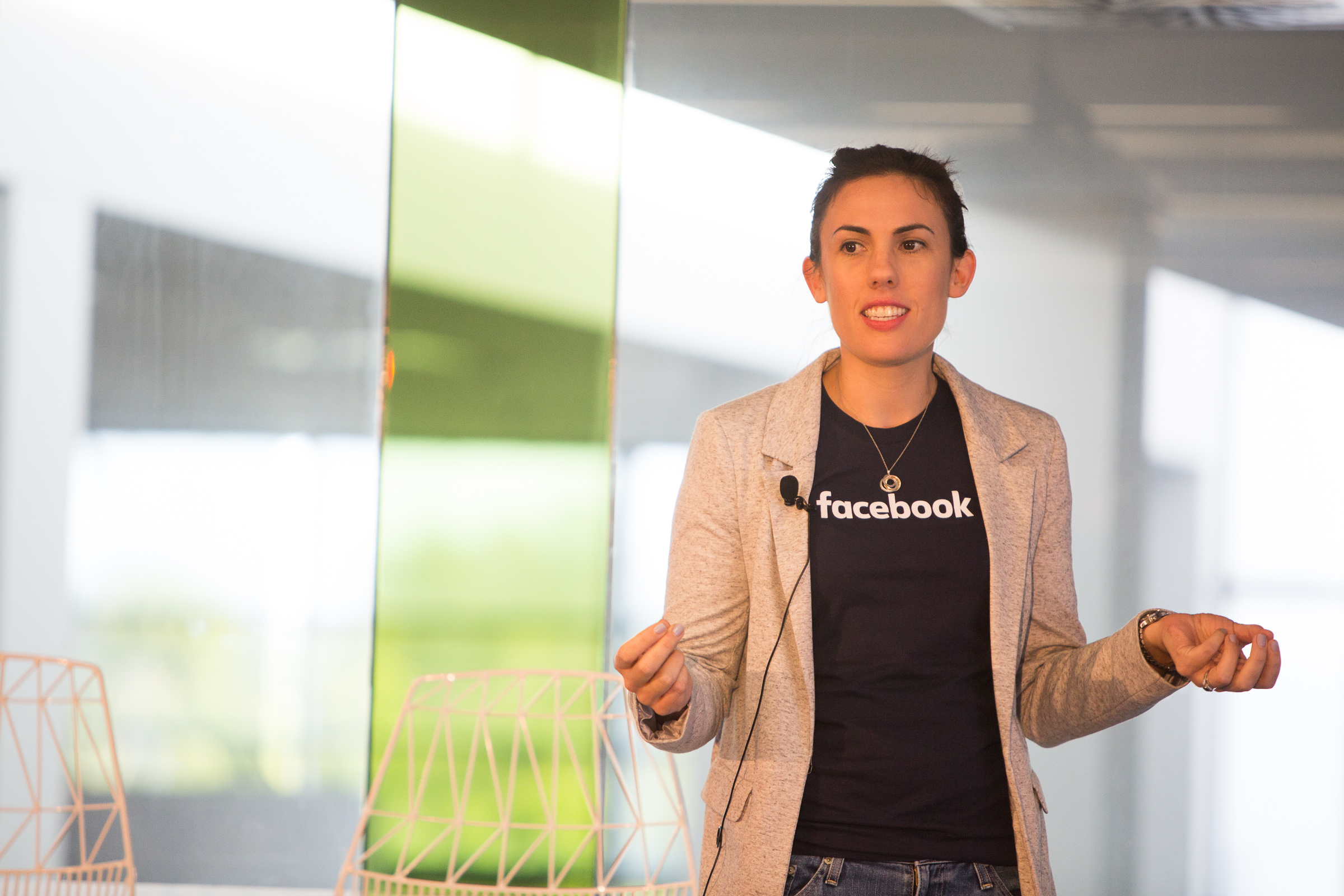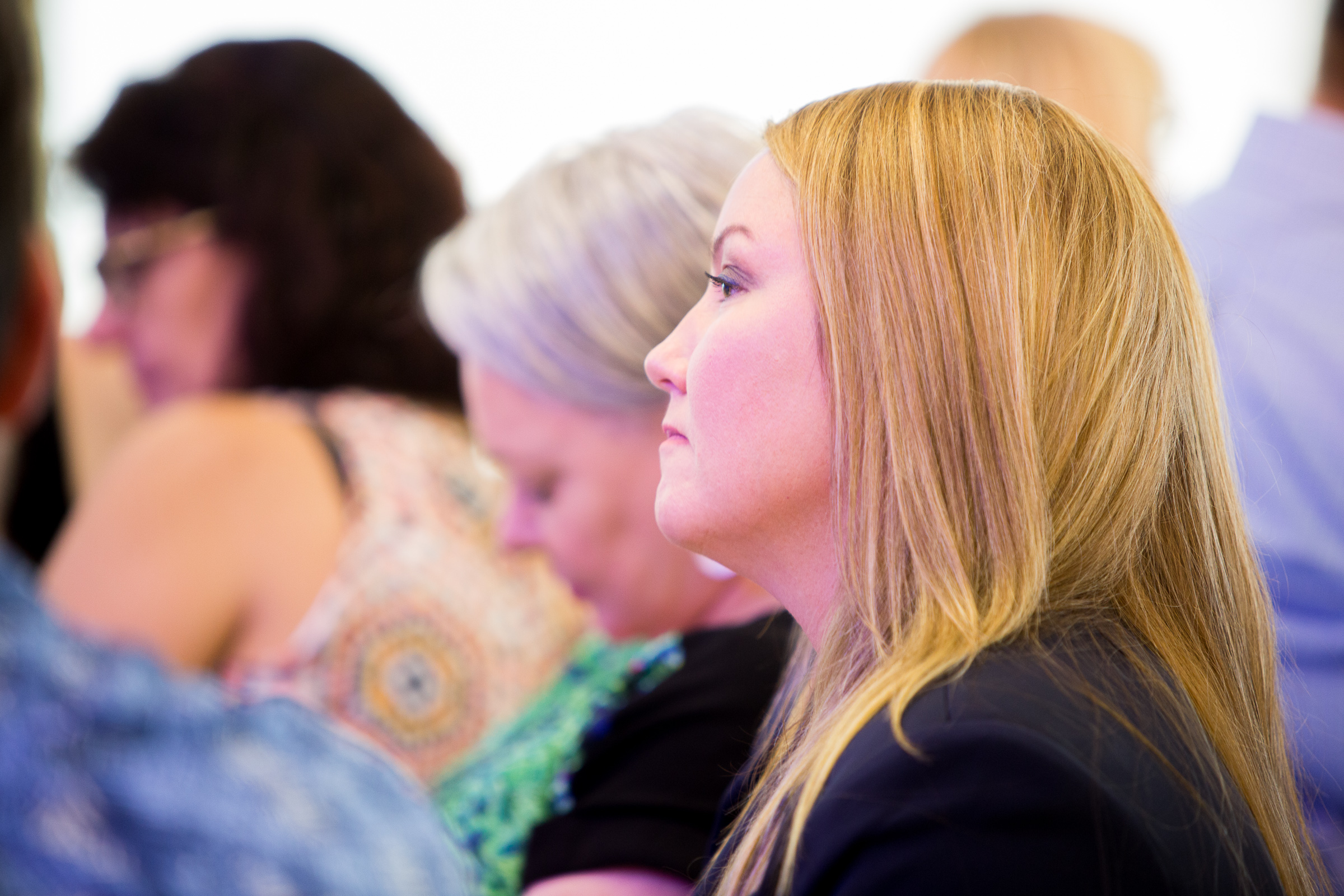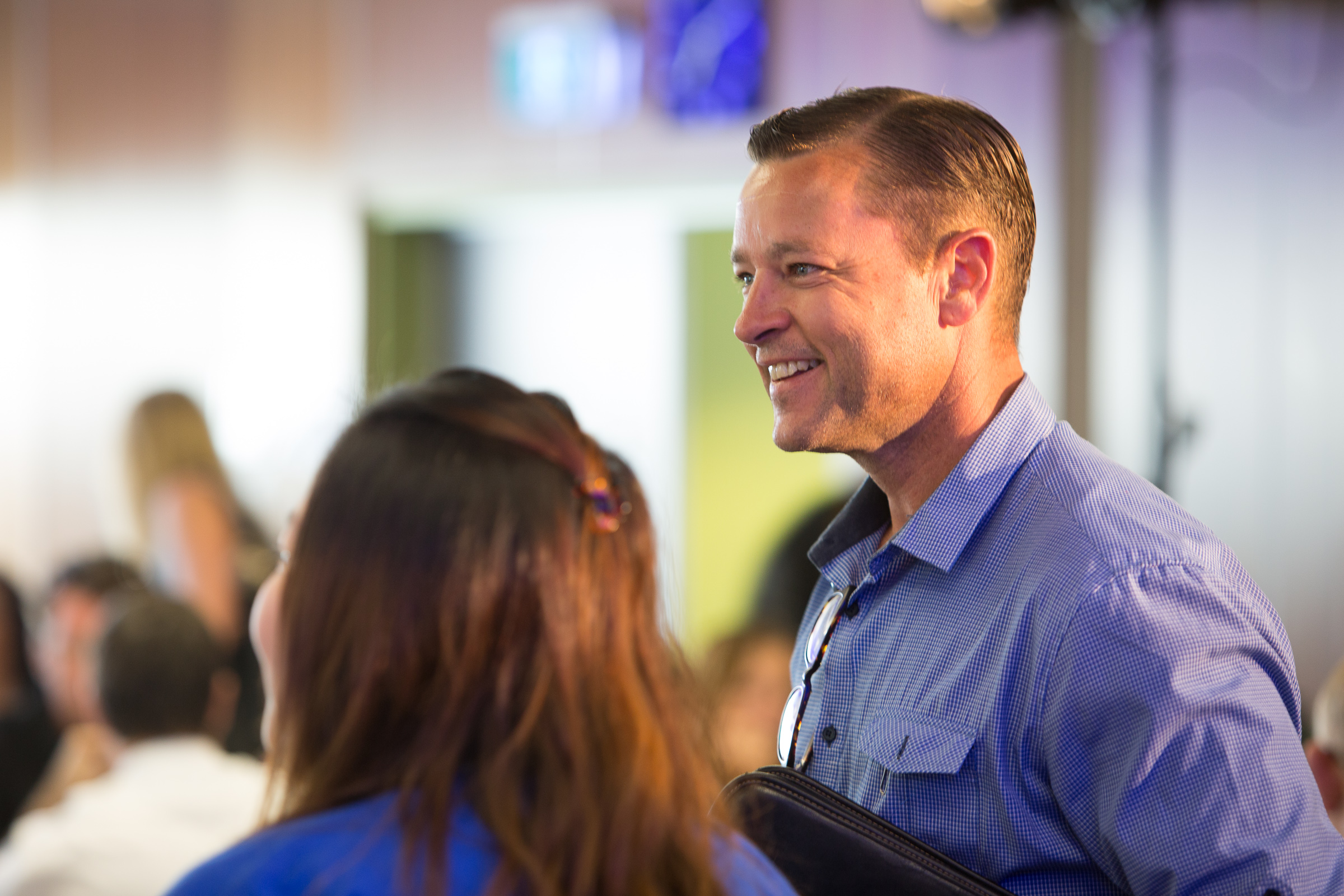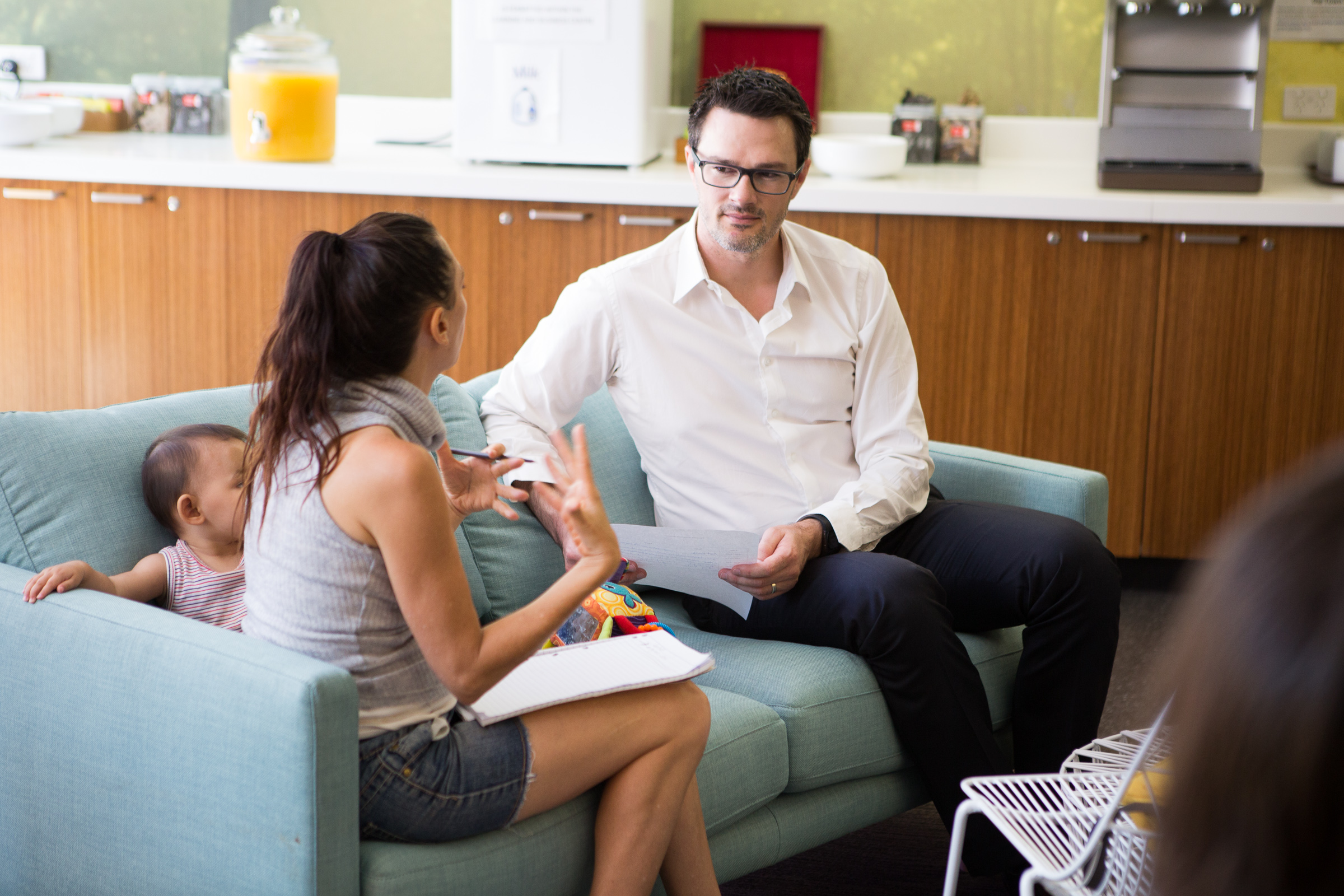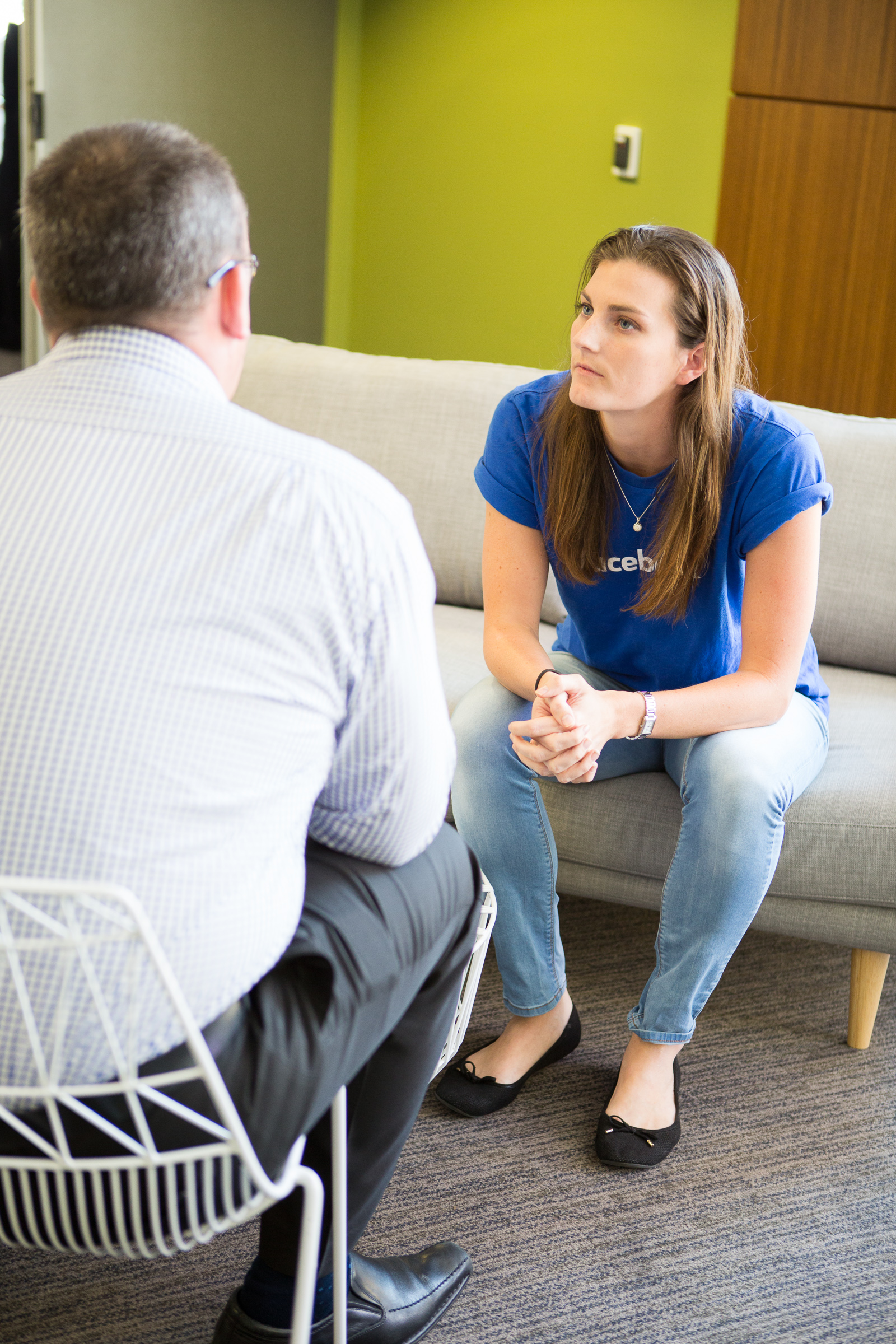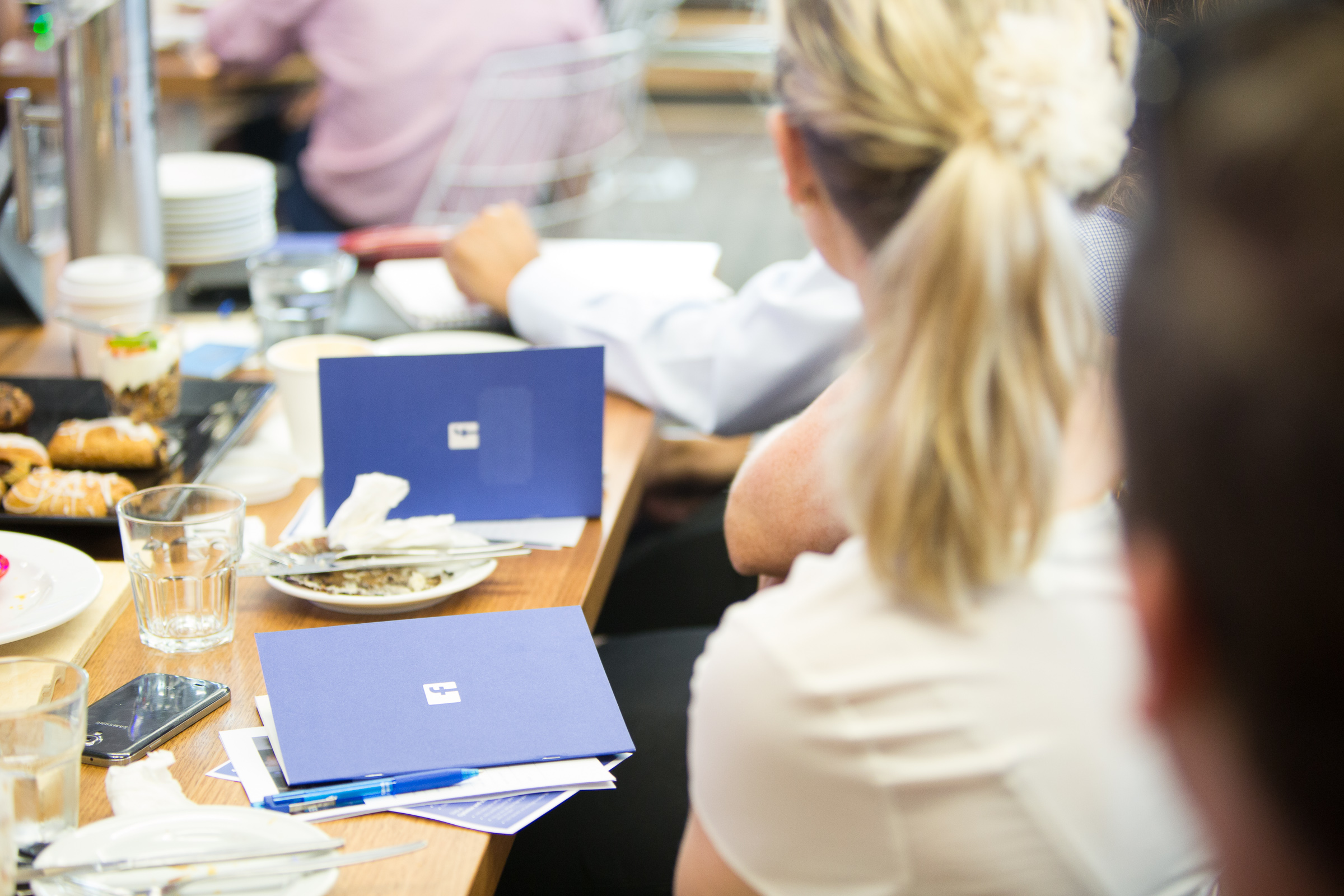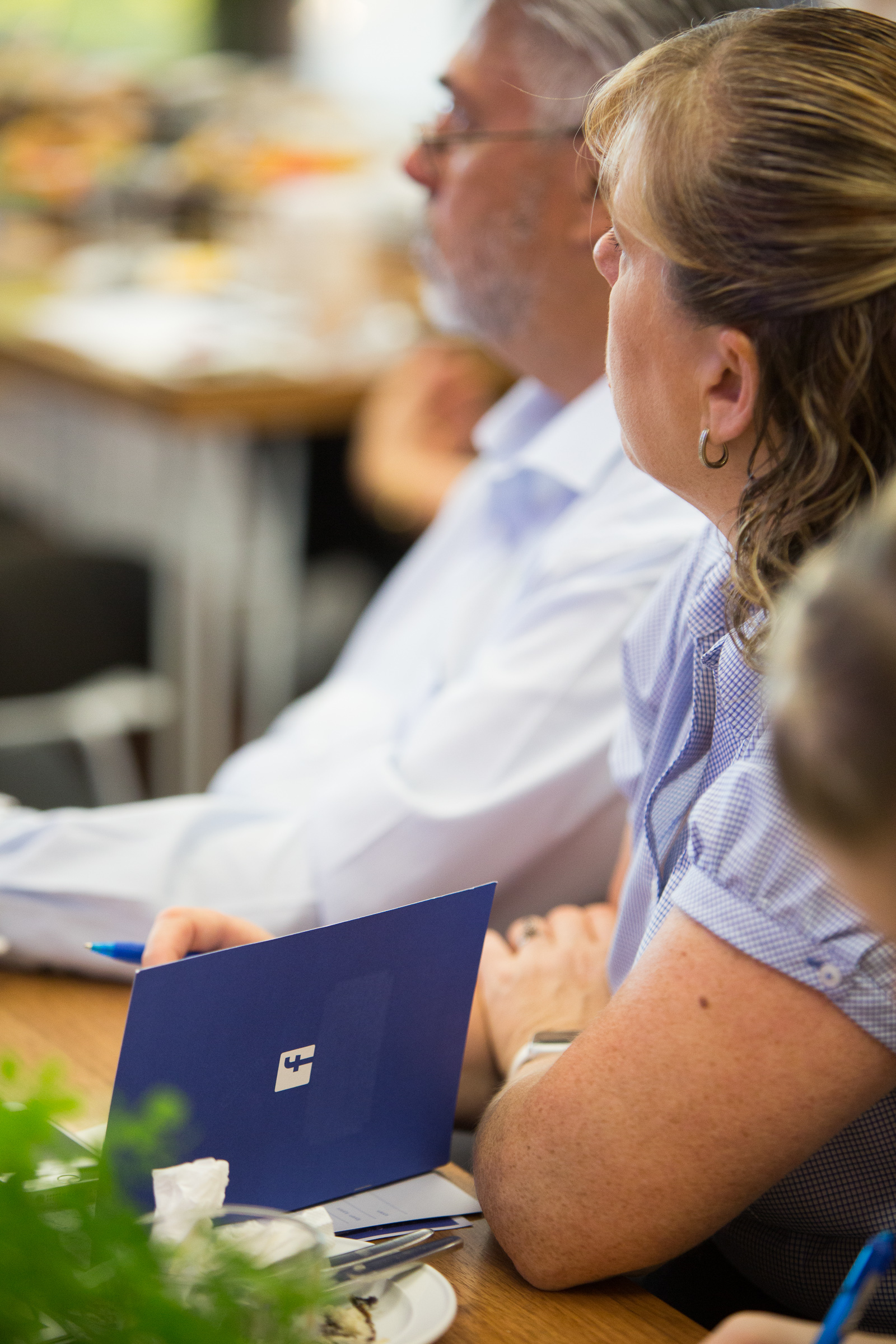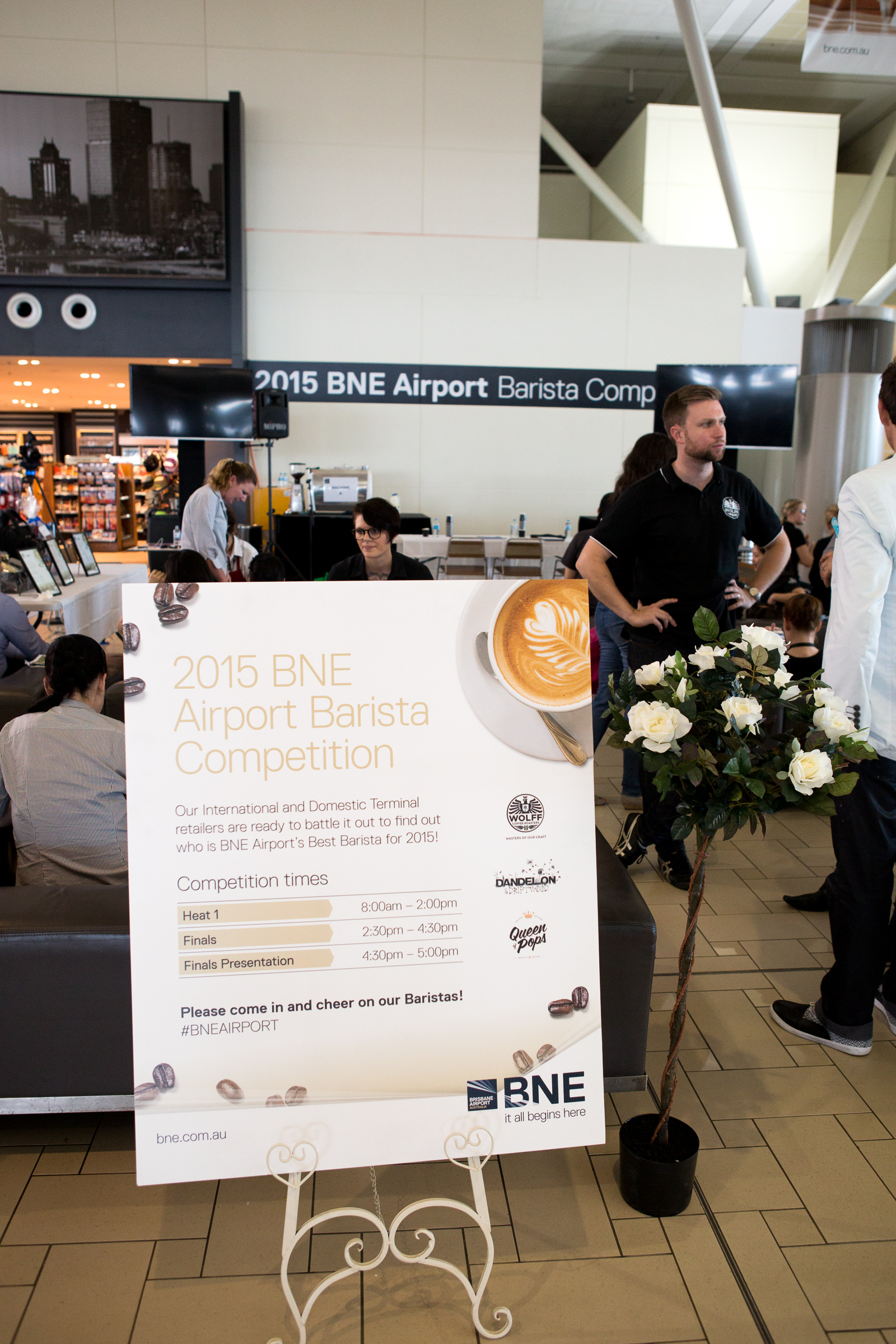“Some people sat in a room, and some other people stood up and talked at them.” Not a very interesting story is it? Events – whether corporate events, workshops, launches or parties – are much more interesting than that, and my aim when covering them is to tell the story of the connections and interactions that occur amongst the speakers, participants and guests.
Speakers
Event managers, it’s 2016. Time to get your speakers out from behind lecterns and podiums and interacting with their audience. My approach to photographing event speakers and presenters is to capture moments when their expressing themselves, not when they’re reading from their notes at a lectern. Some aspects I consider while photographing presenters include:
- Lighting – It’s an unfortunate reality that many events are held in hotel conference and ballrooms, with less than ideal lighting. If the room isn’t well lit, is there a source of light such as a window that I can try and capture the speaker next to? If there are a lot of windows, the speaker’s probably back-lit, meaning I’ll need to expose the image correctly. Can I use flash? If not, I’ll need to overexpose to make sure the speaker isn’t in silhouette. If so, is the ceiling low enough to bounce the light off and avoid flashing the speaker in the face? Nobody likes being flashed in the face. Especially not in public.
- Microphones – Back in my music photography days, it was often difficult to avoid “microphone face” – where the low shooting position and microphone stands could result in a singer’s face being obscured by the mic. At more sedate events, I can move around the room, ensuring a good angle that reduces the obstruction. Even better if the speaker has a radio-mic, or a handheld mic which they’ll move away from their face from time to time.
- Facial Expressions – Capturing a speaker mid-sentence can make for engaging photos showing their passion for the subject. Unfortunately, it can also result in embarrassing and awkward facial expressions. Even Beyoncé‘s not immune from this one.
Audience
When you’re telling the story of your event, you want to show that your audience was engaged and interested. Photos from the back of the room, showing the back of people’s heads aren;t really going to tell that story. When I’m photographing an event, I walk around the room, looking for moments where audience members are clearly focussed on the front of the room, pondering what’s being said, and taking notes.
Interactions
“Social Photos”. You know the ones I mean – two people who barely know each other, standing awkwardly next to each other, forcing a smile at a photographer who interrupted their conversation. I don’t want to interrupt people’s conversations for social photos. I’d rather capture the conversations, the interactions, the smiles of recognition cross the room. These images are the story of your event.
Branding
Events are presented, supported and sponsored by brands. They don’t do that out of the goodness of their heart. They do it for exposure, brand recognition and good will. So, when I’m shooting an event, I try to get as many photographs as possible which include some element of the event’s branding. A banner in the corner of the room? Hmm, maybe. Someone using, wearing or interacting with your sponsor’s product or your company or sponsor’s logo? Ideal.
As 2016 gets underway, and you’re planning your event calendar for the year, think about the type of event coverage you’d prefer. If you want photographs that tell the story of your event, the people, the interactions and the connections, get in touch.
